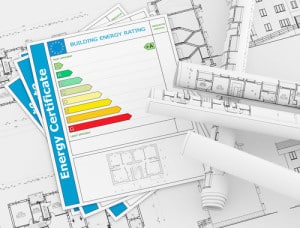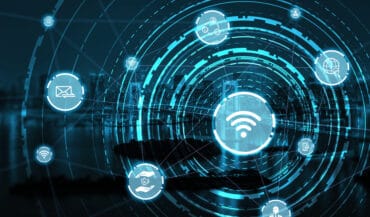
New Zealand bank ASB saw $1.5 million over three years in smart meter benefits. Here’s how:
Name of Organization: ASB Bank
Industry: Financial services
Location: Auckland, New Zealand
Business Opportunity or Challenge:
The New Zealand government has embarked on an active program to reduce energy consumption among businesses in the country. To respond to this challenge, ASB Bank, the nation’s leading financial institution, decided to install a network of smart meters throughout its offices and branches to monitor and control energy consumption.
Such an initiative required a reliable nationwide communication infrastructure and, for security purposes, a solution that was independent of the bank’s data network. Already aware its energy consumption was a considerable cost to the business, ASB Bank began discussions with local energy consultancy to adopt up to 200 smart meters throughout its offices and branch network. The meters would monitor energy usage in real time, and if ASB Bank met government targets, it would obtain funding to help meet the costs of the installation from New Zealand’s Electricity Commission.
How This Business Opportunity or Challenge Was Met:
ASB Bank contracted with Vodafone Global M2M to help deliver the smart metering solution. The goal was to install smart meters in all 167 branches and as many as 10 smart meters each in the bank’s data center, call center and head office.
The meters collect data every 15 minutes, from eight power sources, feeding back to a central server every 30 minutes, all day, every day. ASB Bank is able to monitor the data real time, checking the load profile, and make adjustments accordingly. This system has been installed across branches and key buildings as well as individual loads in larger buildings.
Once data is collected, it can be manipulated through an array of customized reports and automatically emailed from the server.
While the Vodafone M2M smart meter solution was already established globally, it was a new technology for the New Zealand market. As a result, considerable resources needed to be invested to refine the equipment and developing programming protocols and addresses.
 Measurable/Quantifiable and “Soft” Benefits:
Measurable/Quantifiable and “Soft” Benefits:
One of the most pronounced smart meter benefits was the ability to see, in real-time, power consumption patterns across the bank’s network of locations. When the smart meters were installed, the impact was seen within 24 hours, says Leo De Graaf, senior services engineer at ASB Bank. “We knew our power use had been rising – and we’d been trying to tackle this – but we weren’t getting anywhere,” says de Graaf. “With the smart meters we could see the profile of every branch immediately.”
The data showed that many of the bank’s remote monitoring controls were not working correctly and lights, display signage and air conditioning units were being left on at night. “We thought our remote controls were working effectively,” says de Graaf. “Many weren’t. We thought we’d been doing the right thing but it turns out we were working blind.”
ASB Bank quickly created benchmark targets for different branch categories. Engineers can now make adjustments at one branch, monitor the impact in near real-time and tweak if necessary. Once the optimum performance is established, the methods can then be rolled out to other branches of the same category.
ASB Bank engineers also created an employee intranet portal where staff are able to monitor the performance of their own office or branch. In the process, employees have become advocates for energy saving.
As for other smart meter benefits, De Graaf says the data is shaping the bank’s future property plans and enables his team to trial new technologies – such as insulation, occupancy sensors, delay timers for fast warm-up in winter, and installation of high performance window films to reduce heat-load – to establish a clearer idea of cost of ownership and return on investment.
After one year the smart metering solution had reportedly saved more than $400,000. By the second year a further $500,000 had been saved, and by the third year $600,000 was saved, compared to the energy consumption prior to the implementation.
“We’ve comfortably met Electricity Commission targets. Energy consumption in ASB buildings is down 23% and we’re aiming to reduce energy by a further 15% over the next four years,” says Leo de Graaf.
(Source: Vodafone)
Want more? Check out our most-read content:
White Paper: How to ‘Future-Proof’ a Streaming Analytics Platform
Research from Gartner: Real-Time Analytics with the Internet of Things
E-Book: How to Move to a Fast Data Architecture
The Value of Bringing Analytics to the Edge
Three Types of IoT Analytics: Approaches and Use Cases
IoT Architectures for Edge Analytics
IoT Security: It’s More About Privacy Than Killer Roombas
Liked this article? Share it with your colleagues!
































